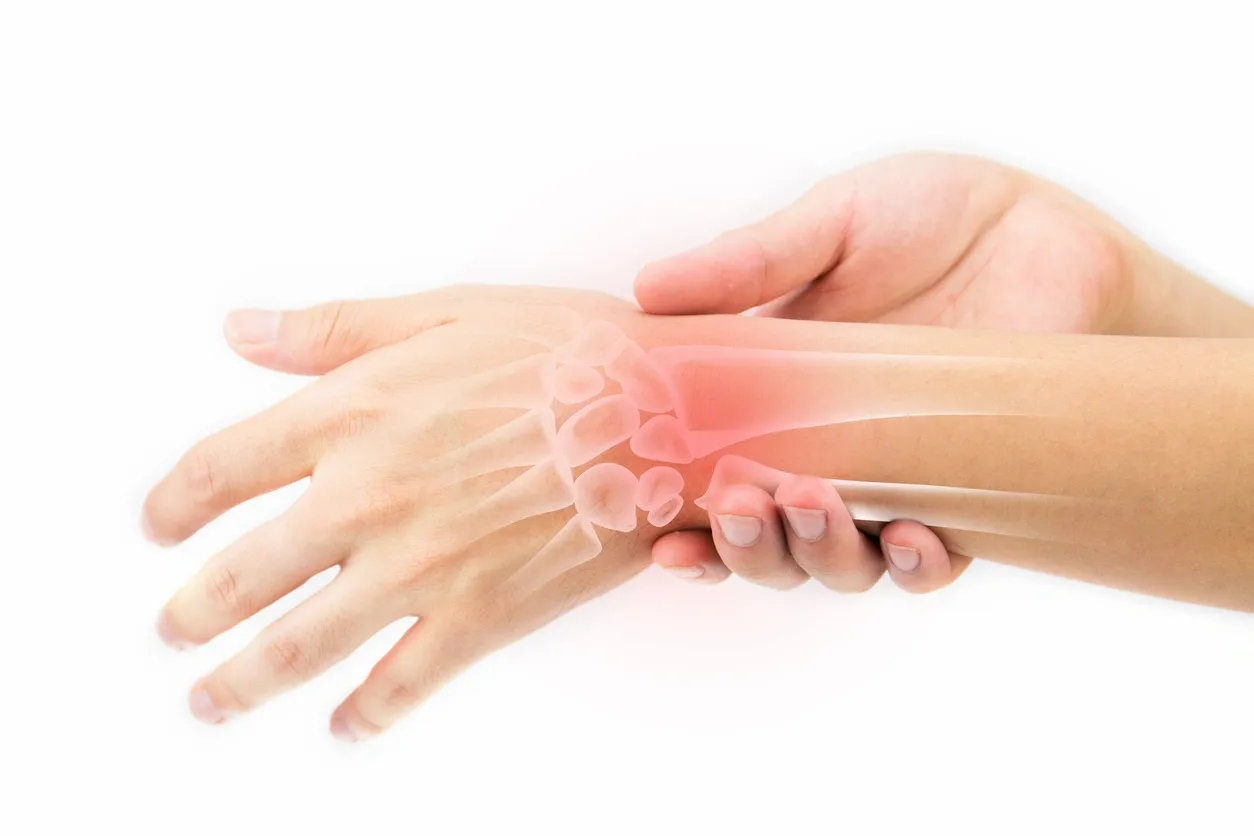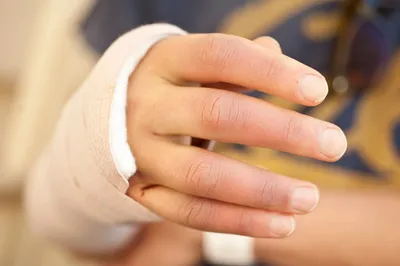Hand and Wrist

Gayan manages adult and paediatric hand and wrist injuries including fractures and dislocations as well as chronic conditions such as carpal tunnel syndrome, trigger finger, base of thumb arthritis and De Quervain’s syndrome. He can perform a wide range of open and arthroscopic surgeries to address these problems.
Orthopaedic Conditions Affecting Hand & Wrist

The hand and wrist are complex joints, which are vital for our day to day activities. Acute injuries such as fractures, as well as chronic wear and tear problems can cause pain and functional problems.
Acute Fractures
Hand and wrist fractures are extremely common. Distal radius fractures (broken wrist) are in fact the commonest fractures in the body. These usually result from a fall on an outstretched hand. Most of these fractures can be treated conservatively with plaster immobilisation for about 6 weeks. However, when the broken bone is not aligned properly, surgery is required to fix the bones with plates and screws.
Scaphoid fractures are also very common, especially in young men with traumatic wrist injuries. The scaphoid is a small bone in the wrist, which is pivotal for wrist function. The blood supply to the scaphoid is limited and fractures can impact this scarce blood supply, that can lead to the scaphoid bone to collapse. Collapse of the scaphoid bone can lead to early arthritis of the wrist, which can be a devastating problem, especially as this happens in young patients. Therefore, it is very important to treat these injuries appropriately from the outset. A CT scan is typically used to look for any movement of the fracture, and surgery may be needed if there is evidence of this.
Hand fractures occur frequently as well. Most hand fractures can be treated conservatively with splinting and hand therapy. However, fractures around a joint, or fractures that are not aligned appropriately may need surgery.
Tenosynovitis
Tendons can get inflamed or entrapped as they pass through tunnels in different parts of the hand and wrist. The commonest forms of tenosynovitis is trigger finger and De Quervains.
Trigger fingers can cause pain and clicking/locking of the fingers. Sometimes patients need to use their other fingers to free the finger that is affected. This is due to the tendon being entrapped under a pulley (akin to a tunnel) that it runs through.
In mild cases, a corticosteroid can be used as a first line of treatment. In recurrent cases or if severe symptoms then surgery is needed to release the pulley, to allow the tendon to glide freely.
De Quervains tenosynovitis is due to the same problem happening in the wrist along one of the tendon groups (1st extensor compartment). It can cause pain on the outside of the hand and wrist. Treatment options include anti- inflammatories, corticosteroid injections, hand therapy and splinting. If this fails, surgery is very successful in treating this condition.
Carpal Tunnel Syndrome
Carpal tunnel syndrome is a very common condition, which is caused by the median nerve (one of 3 nerves that supply the hand) gets compressed under the tunnel it travels in around the wrist. The nerve injury causes pain and tingling in the wrist and hand, and symptoms are especially worse at night.
In early cases, night splints and corticosteroid injection can be used to treat this condition. In severe cases, especially if there is numbness or weakness, surgery is required to release the tunnel and free the nerve. It is important to release the nerve, before the nerve damage becomes permanent.
Wrist Arthritis
Wrist arthritis is uncommon (compared to hip or knee). It is usually the result of previous trauma or injury. Common causes include after scaphoid fractures (SNAC wrist) or after ligament injury of the scapho-lunate ligaments (SLAC wrist). Arthritis can present with pain and reduced wrist and hand range of motion.
Depending on the age of the patient and severity of symptoms surgery is usually warranted. Once arthritis develops, it’s too late to address the original problem (i.e. scaphoid fracture or scapho-lunate ligament rupture). Thus treatment usually involves fusion type procedures.
Hand Arthritis
Osteoarthritis and inflammatory arthritis conditions of the hand can affect multiple small joints of the wrist and the hand. With appropriate medical management, joint destruction from inflammatory arthritis is becoming less frequent. Arthritis typically presents with pain in the wrist and hand, as well as stiffness and difficulty with using the hand.
Treatment for arthritis in the wrists and hands include conservative options such as hand therapy, splinting and activity modification. With ongoing symptoms surgery may be required, which includes fusion or replacement type procedures.
Base of Thumb Arthritis
Base of thumb arthritis is the commonest form of arthritis in women. It commonly causes pain in the base of the thumb, stiffness and difficulty with pinching type activities.
In mild cases, splinting, simple medications and corticosteroid injections are the first line of treatment. In severe cases, surgery is required. Suspensionplasty is the gold standard in regards to surgery; this involves removing the wrist bone at the base of the thumb (trapezium) and using part of a tendon to act as a cushion in its place. However, in manual workers, thumb fusion is a better option to provide better strength.
Our Expertise
We treat acute and chronic wrist and hand conditions. Gayan believes in taking a conservative approach, as many conditions affecting the hand and wrist can be treated without surgery. However when surgery is needed, he is a sub-specialist that can perform arthroscopic (key-hole) or open procedures of the hand and wrist.
